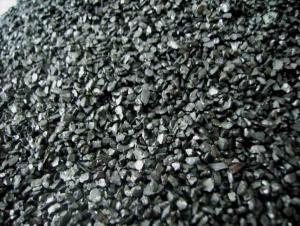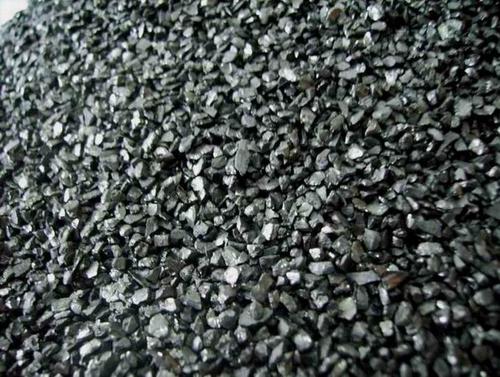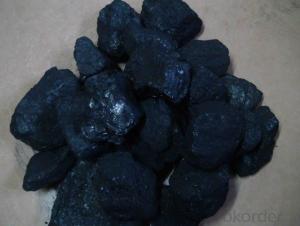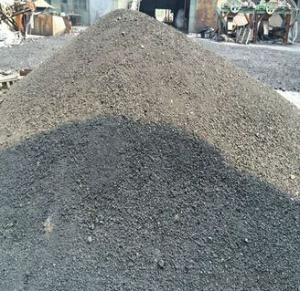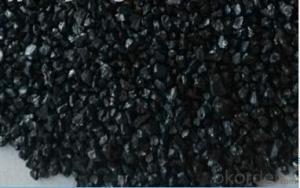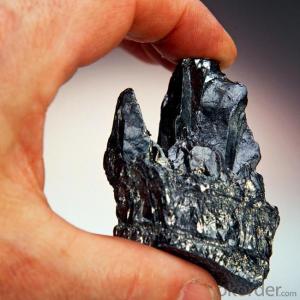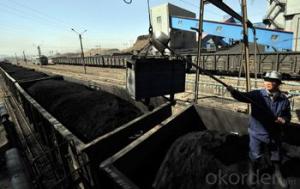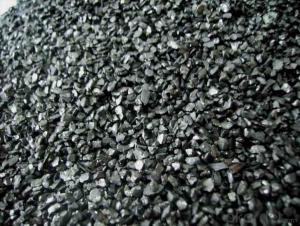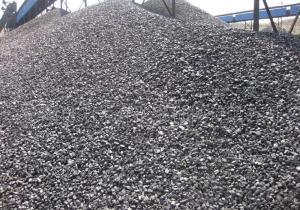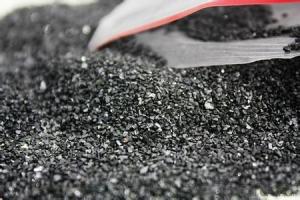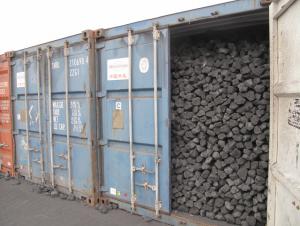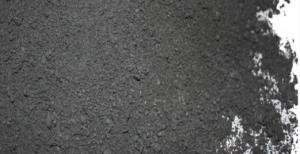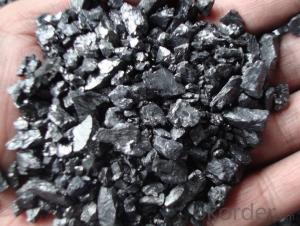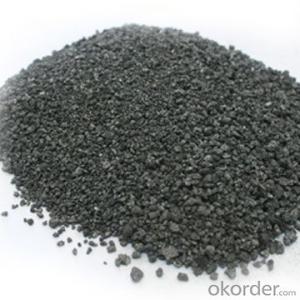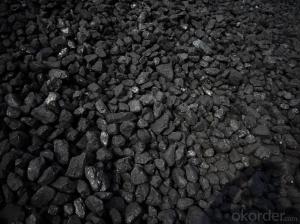ANTHRACITE
- Loading Port:
- China Main Port
- Payment Terms:
- TT OR LC
- Min Order Qty:
- -
- Supply Capability:
- -
OKorder Service Pledge
OKorder Financial Service
You Might Also Like
In the last 15 years Minermet Group has opened up a new Division for Anthracite, Coal and Coke which is expanding very much, for markets in Europe, Russia, Middle East, Pakistan, India, Vietnam, Australia and Indonesia.
Coal (from the Old English term col, which has meant "mineral of fossilized carbon" since the 13th century)is a combustible black or brownish-black sedimentary rock usually occurring in rock strata in layers or veins called coal beds or coal seams. The harder forms, such as anthracite coal, can be regarded as metamorphic rock because of later exposure to elevated temperature and pressure. Coal is composed primarily of carbon along with variable quantities of other elements, chiefly hydrogen, sulfur, oxygen, and nitrogen.
Throughout history, coal has been used as an energy resource, primarily burned for the production of electricity and/or heat, and is also used for industrial purposes, such as refining metals. A fossil fuel, coal forms when dead plant matter is converted into peat, which in turn is converted into lignite, then sub-bituminous coal, after that bituminous coal, and lastly anthracite. This involves biological and geological processes that take place over a long period. The Energy Information Administration estimates coal reserves at 948×109 short tons (860 Gt).One estimate for resources is 18 000 Gt.
Coal is the largest source of energy for the generation of electricity worldwide, as well as one of the largest worldwide anthropogenic sources of carbon dioxide releases. In 1999, world gross carbon dioxide emissions from coal usage were 8,666 million tonnes of carbon dioxide.In 2011, world gross emissions from coal usage were 14,416 million tonnes.Coal-fired electric power generation emits around 2,000 pounds of carbon dioxide for every megawatt-hour generated, which is almost double the approximately 1100 pounds of carbon dioxide released by a natural gas-fired electric plant per megawatt-hour generated. Because of this higher carbon efficiency of natural gas generation, as the market in the United States has changed to reduce coal and increase natural gas generation, carbon dioxide emissions have fallen. Those measured in the first quarter of 2012 were the lowest of any recorded for the first quarter of any year since 1992.In 2013, the head of the UN climate agency advised that most of the world's coal reserves should be left in the ground to avoid catastrophic global warming.
Coal is extracted from the ground by coal mining, either underground by shaft mining, or at ground level by open pit mining extraction. Since 1983 the world top coal producer has been China.In 2011 China produced 3,520 million tonnes of coal – 49.5% of 7,695 million tonnes world coal production. In 2011 other large producers were United States (993 million tonnes), India (589), European Union (576) and Australia (416).[9] In 2010 the largest exporters were Australia with 328 million tonnes (27.1% of world coal export) and Indonesia with 316 million tonnes (26.1%),while the largest importers were Japan with 207 million tonnes (17.5% of world coal import), China with 195 million tonnes (16.6%) and South Korea with 126 million tonnes (10.7%).
- Q:What is charcoal? How is it made?
- Charcoal (charcoal) is wood or wood raw material after incomplete combustion or pyrolysis under the condition of air isolation, dark brown or black porous solid fuel residue. Keep the amorphous carbon tar residue of impure wood hole of the original structure and now still life. In addition to the fuel, is used in metal smelting, light industry food and fuel, reducing agent of metal smelting, refining as a covering agent for protecting the metal from oxidation. In the chemical industry often carbon disulfide and active carbon materials. As a biscuit factory, smelter and other fuels, is also used for filtration, liquid water decolorization. The still grinding and painting, cosmetic, medicine, carburizing, powder alloy preparation method has two kinds of application:
- Q:Tea and activated carbon which adsorption effect is goodSuch as the title
- Activated carbon is a kind of adsorption material, which can be used for adsorption of organic matter, and the tea can only taste:
- Q:I use a activated carbon respirator (Miguel card please see picture), but the product did not specify how long you can use, only that can smell the poisonous gas is to be replaced, but the smell is not good, for fear of insecurity, would like to ask if there is a smell of paint in this environment. How long you can use mask is safe, by the hour
- Preparation of two masks, exchange use, used during the day, after work away from the workplace, place ventilation. Each with 3 days x 8 hours to open a clean, dry, because the surface has been painted powder, use after 60 hours to replace the new carbon.
- Q:Coal can be used to do
- 5) living coal: the number of living coal is also large, accounting for about 20%. of fuel coal6 metallurgical power coal: Metallurgical power coal is mainly used for sintering and blast furnace coal injection, the use of less than the amount of coal power 1%.
- Q:The principle and function of economizer recycle?
- Economizer recycling is the bottom of the drum and economizer inlet pipe is equipped with a recycling pipe, it works: in the initial stage of the boiler ignition or shutdown process, because the water can not continue to stop when the water supply,
- Q:What is the role of coal
- 1 power generation coal: more than 1/3 of China's coal used to generate electricity, the current generation of the average coal consumption of standard coal 370g/ (kW * h) or so. The power plant using the calorific value of coal, the heat energy into electricity2) steam locomotive coal: accounts for about 2% of the power coal, the average coal consumption of the boiler is 100kg/ (10000 tons / km)3) coal for building materials: about l0% of the power coal, the largest amount of coal used in cement, followed by glass, brick, tile and so on4 general industrial boiler coal: in addition to the thermal power plant and large heating boiler, the general enterprise and the heating of the industrial boiler model, large quantity and scattered, with coal accounts for about 30%.
- Q:How much is the standard coal coefficient
- Liquefied petroleum gas: 1 kg = 1.7572 x 10-3 tons of standard coalThis is a number of energy conversion into standard coal coefficient, the new water coefficient is 0.0857kgce/t so 1t water is converted into standard coal should be: 1*0.0857=0.0857kg standard coal
- Q:A 10 ton steam boiler runs for about 24 hours a dayHow many cubic meters per day do you have to burn the fuel, and how many kilograms of diesel oil should be fired per hour of the oil boiler 10T?
- So: need to burn an average of 50/29.3=1.7 tons of coal per hour, the amount of 1.7*24=40.8 tons per dayIf the burning of ordinary coal (3500-4000 kcal) requires 3 tons. The amount of 3*24=72 tons per dayHe needs to know the amount of heat to burn gasThe burning of diesel oil is 20 tons per day
- Q:I would like to ask my fridge, smelly, want to use activated carbon deodorant, but do not know all of the activated carbon can smell?
- Sure。 As long as your refrigerator is not wet. But if you use the activated carbon, or orange peel is better, because the orange peel will be distributed fragrance
- Q:Why is coal spontaneous combustion?
- The spontaneous combustion of coal, especially those of low-grade bituminous coal, occurs when the heat absorbed from the environment is greater than the amount of heat released into the environment
1. Manufacturer Overview |
|
|---|---|
| Location | |
| Year Established | |
| Annual Output Value | |
| Main Markets | |
| Company Certifications | |
2. Manufacturer Certificates |
|
|---|---|
| a) Certification Name | |
| Range | |
| Reference | |
| Validity Period | |
3. Manufacturer Capability |
|
|---|---|
| a)Trade Capacity | |
| Nearest Port | |
| Export Percentage | |
| No.of Employees in Trade Department | |
| Language Spoken: | |
| b)Factory Information | |
| Factory Size: | |
| No. of Production Lines | |
| Contract Manufacturing | |
| Product Price Range | |
Send your message to us
ANTHRACITE
- Loading Port:
- China Main Port
- Payment Terms:
- TT OR LC
- Min Order Qty:
- -
- Supply Capability:
- -
OKorder Service Pledge
OKorder Financial Service
Similar products
New products
Hot products
Hot Searches
